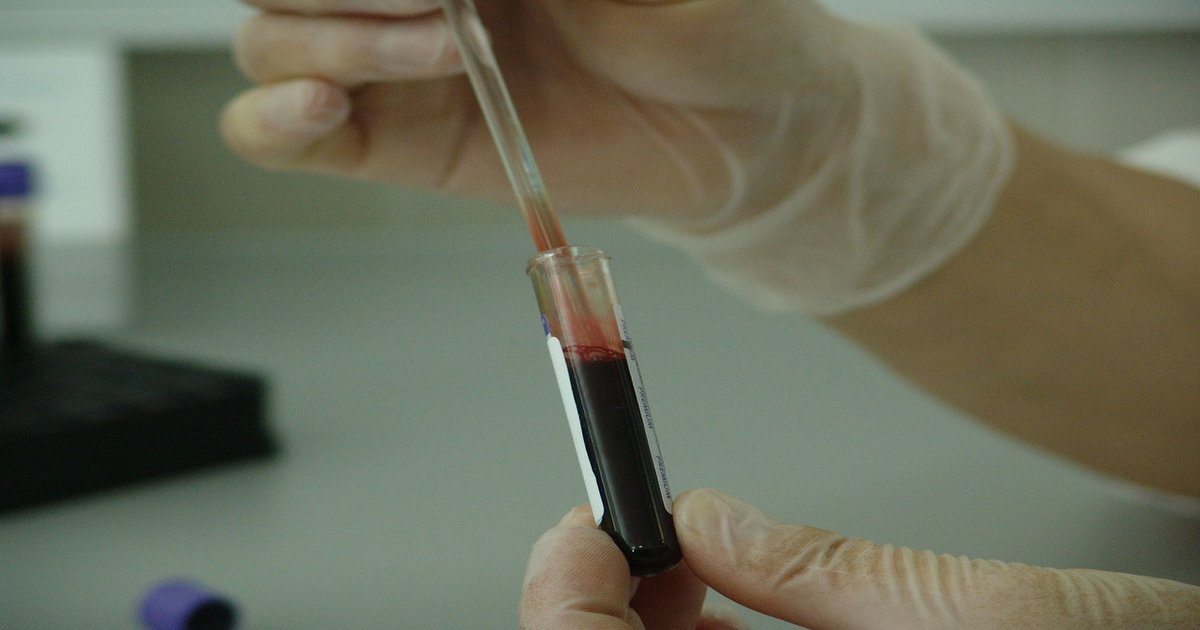Category: Featured News

microRNA Could Be the Key to Mesothelioma Development
Recently, microRNAs have received lots of attention as a significant scientific and medical discovery. They appear to play a major role in reprogramming a cell to undergo uncontrolled cell division, causing growth of cancerous tumors. Now, researchers believe the microRNA drives the development of lung cancer.
An important new study from Vanderbilt University published December in The Journal of Clinical Investigation suggests the miR-31 microRNA is expressed at high levels in lung cancer tumors, and it is indicative of decreased survival.
http://www.jci.org/articles/view/82720
“We discovered that miR-31 is an independent survival factor, meaning that its expression impacts survival, independent of other factors such as tumor size, tumor burden and tumor location,” said Christine Eischen, Ph.D., professor of Pathology, Microbiology and Immunology, Vanderbilt University, according to a Jan. 28 press release from Vanderbilt-Ingram Cancer Center. “That suggests it’s very important.”
https://news.vicc.org/2016/01/study-identifies-new-culprit-in-lung-cancer-development/
Although the research was focused on lung cancer, every new breakthrough in cancer research brings hope to mesothelioma patients. Pleural mesothelioma, an asbestos-caused cancer equally as aggressive as lung cancer, is diagnosed in close to 3,000 Americans each year.
microRNAs, or miRNAs, are tiny molecules found within cells that serve a function in primary biological processes such as organ development, fat metabolism, cell proliferation and death. They are single stranded molecules that regulate gene expression. When miRNAs function properly, a person remains healthy. However, disregulation of miRNAs can lead to diseases, including mesothelioma and other cancers. On the contrary, when used as therapeutic agents, miRNAs can inhibit tumor growth.
The Vanderbilt researchers began to focus on the miR-31 protein when they found elevated levels resulted in increased cell transformation to tumor-like cells and cell growth. Via mouse models injected with human lung cancer cells, the researchers confirmed increased lung tumors with miR-31 over-expression.
“When we left miR-31 on for longer and longer periods of time, we saw the formation of adenomas (benign tumors) and then lung carcinomas,” said Eischen. “Mick [Mick Edmonds, Ph.D. and study lead] and I were thrilled with these results because no one had previously shown a microRNA could induce cellular transformation in the lung and cause cancer to develop.”
The teams’ findings suggest targeting miR-31 could lead to innovative treatment therapies to suppress tumor growth in patients with lung cancer, and potentially for malignant mesothelioma patients.
Targeted therapy for mesothelioma and lung cancer patients optimizes the potential for success of the treatment and offers treatment options that may not otherwise have been considered. There is no cure for mesothelioma.
The study was published in the Dec. 14 issue of The Journal of Clinical Investigation.

Biomarker May Be Useful Prognostic Factor for Mesothelioma
Nearly 3,000 Americans a year hear the words, “You have mesothelioma.” While the available treatments can relieve symptoms, they do little to improve survival. Stage of the disease, lifestyle, gender and age all play into a patient’s survival. Now, researchers believe that the fibulin-3 biomarker may be another indicator for survival in mesothelioma patients.
Researchers from the Asbestos Diseases Research Institute of Australia, report that while fibulin-3, a protein that floats in blood plasma and in some bodily fluid, has previously been identified as a potential diagnostic marker for mesothelioma, it is also reliable as a prognostic marker. Such biomarkers as the fibulin-3 protein are being sought as a means to detect pleural mesothelioma at an earlier stage, to assist in prognosis, and to individualize treatment strategies for mesothelioma patients.
In a recent study, the researchers measured the amount of fibulin-3 in plasma and pleural effusion from malignant pleural mesothelioma patients and in tumor-bearing mice. They found that fibulin-3 was over-expressed in all mesothelioma lines and that there was a correlation between the expressed and secreted levels. They discovered that the fibulin-3 levels in “pleural effusion fluid were found to be independently associated with prognosis.”
In a 2012 study, using a simple blood test and a lung fluid test of pleural effusion, researchers from NYU Langone Medical Center, led by Dr. Harvey Pass, Director, NYU Division of Thoracic Surgery and Chief of Thoracic Oncology, at NYU Langone, found that the protein fibulin-3 is four to five times more elevated in individuals with mesothelioma than those without. By measuring the levels of fibulin-3 the researchers were able to distinguish healthy people with exposure to asbestos from patients with mesothelioma establishing the protein as a potential mesothelioma diagnostic marker.
According to the NYU Langone website, the team is continuing to study the usefulness of fibulin-3 as a diagnostic marker through “a large validation study using an asbestos exposed cohort of individuals in Santiago Chile.” The study, funded by the NCI, was scheduled to begin in the third quarter of 2015.
Pleural mesothelioma, a rare form of cancer affecting the lining of the lungs, is highly aggressive and there is no cure for the disease. Any research unique to mesothelioma brings hope to the community that finding a new, effective treatment is on the horizon.
The results of the ADRI study were published in the Sept. 2015 British Journal of Cancer.

Imaging Tool May Guide Surgeons to Successful Removal of Mesothelioma Cells
Duke University and Massachusetts General Hospital oncologists are helping to bring a breakthrough cancer-fighting tool to surgeons. The two centers have partnered with Lumicell, Inc., in clinical trials to test the safety of an investigative tool that could help surgeons achieve total cancer resection in one attempt. For mesothelioma patients who have a very high chance of recurrence, this tool could be a life saver.
Developed by Lumicell, Inc., LUM015 combines a hand-held imaging device with an injectable agent that glows, or fluoresces, when cancer cells are detected. This gives surgeons instant feedback and guides them to remove all traces of the cancerous tumor.
According to Lumicell, the company “is addressing the number one challenge in cancer surgery – the need to remove all cancer cells within the tumor bed during the first surgery,” with its LUM015 technology.
“The unprecedented ability to see and remove all cancer cells during the initial surgery has the potential to significantly improve surgical outcomes and reduce healthcare costs by eliminating the need for repeat surgeries,” reports Lumicell.
Mesothelioma, an unusual form of cancer caused by exposure to airborne asbestos fibers, often has a complex growth pattern making complete surgical removal a very difficult task. Surgeons often have to guess how much tissue to remove, then send samples to the lab for confirmation that they got it all. If cancer cells are found in the margin of the tumor, that often means recurrence is inevitable and another surgery may be required.
LUM015 is unique in that it offers real-time visuals to the surgeons to ensure clean tissue margins, indicating all cancerous cells have been removed. This helps eliminate repeat surgeries to remove any missed cancer cells and, as a result, it can halt cancer recurrence and metastasis.
“In the operating room our goal is to take out 100 percent of a patient’s tumor, and the way we try to do that is to take out a margin of normal tissue around the tumor,” said Brian Brigman, M.D., Ph.D., chief of orthopedic oncology at Duke, in a Feb. 2 interview with ABC11 News in Raleigh, NC. “There are parts of the tumor that are microscopic that we couldn’t see even if we wanted to. What the probe does is allow us to see microscopic disease that was maybe left behind.”
Although Dr. Brigman is enthusiastic about the potential use for the tool, saying, “This is groundbreaking research in the way we treat sarcomas,” he admits it could still be 10 years before the tool is used on a regular basis with patients.
To the nearly 3,000 Americans who are diagnosed with mesothelioma each year, and who typically face a grim prognosis, this tool could extend their survival and improve their quality of life.
LUM015 is currently being tested on breast cancer patients. For more information on the clinical trial see ClinicalTrials.gov.
Know more about Mesothelioma and how you can deal with it.

Researchers Find Way to Disrupt Cancer Stem Cell Growth That May Limit Mesothelioma Metastasis
The difficulty in successfully eradicating mesothelioma, an asbestos-caused cancer, is that even after many cycles of chemotherapy, the primary treatment protocol, many of the elusive cancer cells continue to thrive or regenerate. Now, researchers report that in order to successfully eliminate cancer they must first focus on eliminating cancer stem cells – and they know how to do just that.
A team of researchers from the Max Delbrück Center for Molecular Medicine (MDC) in Berlin, led by Liang Fang, report they have found a molecule that interrupts the stem cell survival mechanism, effectively killing off the cancer. The researchers report these errant stem cells are “Wnt-addicted cancer stem cells,” named for the Wnt signaling pathway on which they flourish. When functioning properly, the molecular network maintains the integrity of cells, according to the researchers, but when switched on inappropriately, it can lead to uncontrolled cancer growth and metastases.
According to various studies, metastasis is the cause of nearly 90 percent of cancer deaths. Even though cancer stem cells make up just one percent of cancer cells, according to one study, it is these cells that survive the effects of anti-cancer drugs leaving mesothelioma patients with a seemingly indestructible cancer.
Various researchers have reported that Wnt signaling is activated in mesothelioma cells. In one 2013 study reporting on the effect of the Wnt signaling pathway in mesothelioma, researchers concluded: “Modulation of Wnt signaling in MM [malignant mesothelioma] may prove a means of targeting proliferation and drug resistance in this cancer.”
In the recent study, the German researchers report they found a molecule that interrupts the “biochemical signals essential for the survival of a certain type of cancer stem cell.” They found that beta-catenin, one component in the Wnt pathway, and the TCF4 protein bind together and activate genes that then provide the stimulation cancer stem cells need to thrive. They then turned their research to finding a way to interrupt the connection between the two proteins.
Through trial and error testing by introducing different compounds one at a time, the researchers settled on the LF3 compound that “strongly inhibited binding” and was the “most potent inhibitor.”
When the compound was tested on tumor cells, they found “LF3 blocked several crucial features: it interrupted the cell cycle, preventing them from replicating, and strongly reduced their ability to migrate. LF3 didn’t seem to affect healthy cells at all.”
“We observed a strong reduction of tumor growth,” says Walter Birchmeier, leader of the Screening Unit and Medicinal Chemistry Group, of the results on a mouse model. “What remained of the tumors seemed to be devoid of cancer stem cells – LF3 seemed to be powerfully triggering these cells to differentiate into benign tissue. At the same time, no signaling systems other than Wnt were disturbed. All of these factors make LF3 very promising to further develop as a lead compound, aiming for therapies that target human tumors whose growth and survival depend on Wnt signaling.”
Physicians, oncologists and mesothelioma patients are anxious to find a new treatment for the incurable disease, and focusing on the Wnt pathway may be the breakthrough needed for increasing survival in mesothelioma patients.
The study was published Dec. 8 online in Cancer Research.

Will President Obama’s “Moonshot” Bring an End to Mesothelioma?
Time and again, politicians, researchers and medical professionals have taken on cancer, pledging to eradicate the disease. Now, President Obama has joined the fray introducing the “moonshot” program saying, “let’s make America the country that cures cancer once and for all.” Could this be the start of the end to mesothelioma and other cancers?
During President Obama’s Jan. 12 State of the Union address he announced a national effort to “cure cancer.” Obama has allocated the money and put Vice President Joe Biden at the helm. The two of them believe this “moonshot” will bring about the breakthroughs needed to bring an end to the needless suffering of millions of Americans – and ultimately, people worldwide. The number of cancer cases in the U.S. is expected to rise to 22 million in the next 20 years.
“For the loved ones we’ve all lost, for the families that we can still save, let’s make America the country that cures cancer once and for all,” said Obama.
Last month, according to Obama, Biden worked with Congress to allocate an extra $2 billion for scientists at the National Institutes of Health, “the strongest resources that they’ve had in over a decade.” In addition, Biden and his team have met with hundreds of the world’s top cancer physicians, researchers, and philanthropists, including those at the University of Pennsylvania Abramson Cancer Center where Biden held the formal launch for the program.
“And the goal of this initiative — this “Moonshot” — is to seize this moment,” said Vice President Joe Biden in a Jan. 12 press release, on his blog on Medium, announcing the initiative. “To accelerate our efforts to progress towards a cure, and to unleash new discoveries and breakthroughs for other deadly diseases.”
“My commitment is not for the next 12 months,” Biden told the attendees at Abramson on Jan 15. “I’ve been stunned by the overwhelming response of welcoming me, to ask me to be the facilitator and convener….I plan on doing this the rest of my life.”
Biden selected Penn Medicine for “the cutting edge immunotherapy work done there.” The Mesothelioma Applied Research Foundation applauded the partnership due to Penn’s work with mesothelioma.
“We’ve had a long-standing partnership with Penn Medicine involving the work they’ve done in the field of mesothelioma,” the Mesothelioma Applied Research Foundation said on its Facebook page on Jan. 21. “We’re happy to see the cancer center at the forefront of the new initiative to find a cure with the spotlight on its work in immunotherapy.”
Penn Medicine is the home of Penn’s Mesothelioma and Pleural Program which, according to the website, “brings together internationally renowned experts in medical, surgical and radiation oncology and pulmonology who collaborate in the diagnosis, treatment and research of mesothelioma and pleural disease.”
Mesothelioma is diagnosed in approximately 3,000 people in the United States each year. The disease is incurable, though there are treatments that can improve the patients’ survival. Immunotherapy has recently taken the spotlight for treatment, with Keytruda and Opdivo, both anti-cancer drugs that boost the immune system, showing promise in the treatment of mesothelioma.
Mesothelioma is a rare form of cancer typically affecting the lining of the lungs. Caused by exposure to airborne asbestos fibers, most cases of mesothelioma are diagnosed 30 years or more after exposure.
In 2011, Michele Carbone, M.D., Ph.D., former director of the University of Hawaii Cancer Center, reported that more than 20 million people in the United States are at risk of developing malignant mesothelioma due to asbestos exposure. This moonshot initiative is critical for helping halt the onslaught of this disease.
“I know that we can help solidify a genuine global commitment to end cancer as we know it today — and inspire a new generation of scientists to pursue new discoveries and the bounds of human endeavor,” says Biden.
Sources :
- State of the Union
https://www.whitehouse.gov/the-press-office/2016/01/12/remarks-president-barack-obama-%E2%80%93-prepared-delivery-state-union-address - Penn’s Mesothelioma and Pleural Program
http://www.penncancer.org/patients/cancer-types/mesothelioma/ - Biden told the attendees at Abramson
http://news.pennmedicine.org/blog/2016/01/vice-president-biden-launches-moonshot-effort-at-abramson-cancer-center-photos.html - Vice President Joe Biden
https://medium.com/cancer-moonshot/inspiring-a-new-generation-to-defy-the-bounds-of-innovation-a-moonshot-to-cure-cancer-fbdf71d01c2e
Free Mesothelioma Patient & Treatment Guide
We’d like to offer you our in-depth guide, “A Patient’s Guide to Mesothelioma,” absolutely free of charge.
It contains a wealth of information and resources to help you better understand the condition, choose (and afford) appropriate treatment, and exercise your legal right to compensation.
Download Now